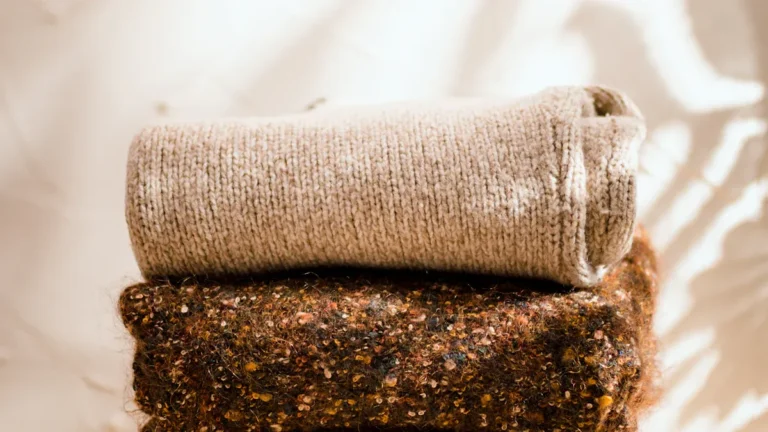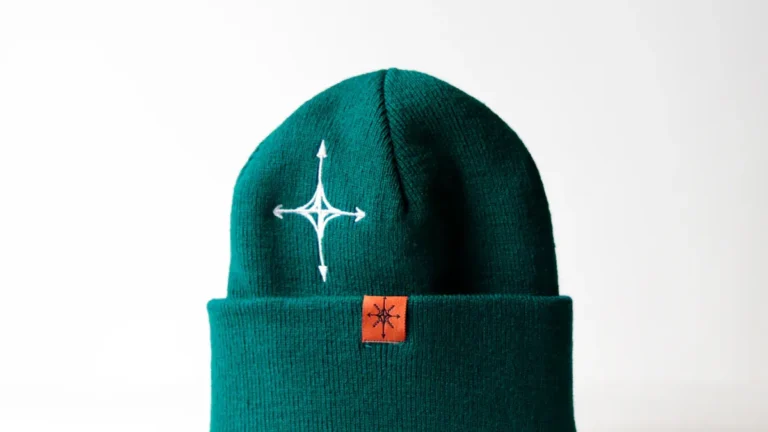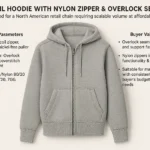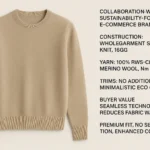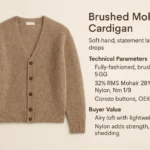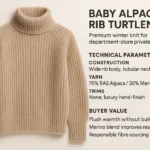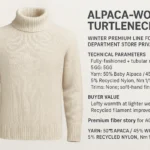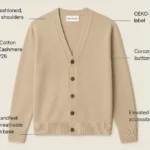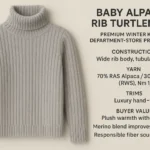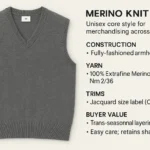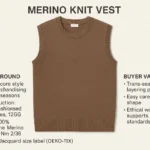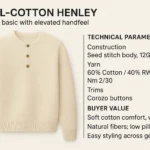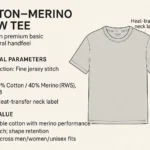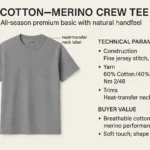
You might wonder about the key differences between a hoodie, sweatshirt, and sweater when you put them on. Each one stands out because of its design, fabric, and the way it fits into your daily life. For example, hoodies come with a hood and pockets, making them perfect for casual days and outdoor fun. Sweaters look more polished and work well for layering, whether you’re at school or a family dinner. Sweatshirts offer a classic style and feel great for workouts or lounging. Take a look at how popular these cozy options are:
|
Year |
Market Size (USD) |
Projected Size (USD) |
CAGR (%) |
|---|---|---|---|
|
2024 |
381.40 billion (2032) |
6.77% |
Choosing the right one can boost your comfort, style, and confidence every day.
Key Takeaways
-
Hoodies have a hood and pockets. They are great for casual and sporty outfits. Sweatshirts are comfy and let your skin breathe. They are good for relaxing or playing sports. Sweaters keep you warm and look nice. They are best for cold days and fancy events. Pick a hoodie for outdoor fun or when you need more warmth. Wear a sweatshirt for exercise or casual days. They are easy to wear with other clothes. Choose a sweater if you want to look neat at family parties or work. Check the fabric before you buy: cotton is soft, wool is warm, and polyester lasts long. Think about what you do and the weather. This helps you pick what works best for you.
Key Differences

At a Glance
When you look at hoodies, sweatshirts, and sweaters side by side, you notice some clear differences right away. Here’s a quick comparison table to help you spot what sets each one apart:
|
Feature |
Hoodie |
Sweatshirt |
Sweater |
|---|---|---|---|
|
Hood |
Yes |
No |
No |
|
Front Pocket |
Usually (kangaroo pocket) |
Sometimes (small or none) |
Rarely |
|
Drawstrings |
Yes |
No |
No |
|
Common Fabrics |
Thick fleece, cotton blends, jersey knit |
Cotton blends, fleece, jersey knit |
Wool, cotton, cashmere, synthetic blends |
|
Style |
Sporty, streetwear, casual |
Athletic, casual, relaxed |
Elegant, smart casual, formal |
|
Price Range |
Mid-range |
Higher end |
|
|
Best For |
Everyday, outdoor, layering |
Lounging, workouts, layering |
Cooler months, layering, dressier looks |
Tip: If you want something cozy with a hood for extra warmth, go for a hoodie. If you need something for sports or lounging, a sweatshirt works best. For a polished look or colder days, sweaters are your friend.
Main Distinctions
You might wonder why these three options feel so different when you wear them. The key differences come down to style, fabric, and function.
-
Style: Hoodies give you a sporty, relaxed vibe. They usually come with a hood and a big front pocket. Sweatshirts look more classic and simple, often without any extra features. Sweaters look more dressed up and work well for both casual and formal settings.
-
Fabric: Hoodies and sweatshirts often use thick fleece, cotton blends, or jersey knit fabric. These materials feel soft and keep you warm. Sweaters use wool, cotton, cashmere, or synthetic blends. Wool and cashmere sweaters feel extra warm and soft, but they can cost more.
-
Function: Hoodies work great for outdoor activities or when you want to feel extra cozy. Sweatshirts are perfect for layering in mild weather or for workouts. Sweaters shine in cooler months and look great at school, work, or family gatherings.
Here’s a quick list to help you remember the main points:
-
Hoodies have a hood and drawstrings, making them ideal for casual and sporty looks.
-
Sweatshirts focus on comfort and breathability, perfect for layering or athletic use.
-
Sweaters offer the most warmth and style, especially when you want to look a bit more dressed up.
You can pick the right one by thinking about where you’ll wear it, how much warmth you need, and what style you like best. Each option has its own strengths, so you can always find something that fits your needs.
Hoodie — Modern Casual Icon
Features
When you think about a hoodie, you probably picture something cozy, casual, and easy to wear. Hoodies stand out because they have a hood, drawstrings, and often a big front pocket. You can pull the hood up when it gets chilly or if you want a bit more privacy. The front pocket, called a kangaroo pocket, gives you a place to warm your hands or stash your phone. Most hoodies have a relaxed fit, so you feel comfortable whether you’re at home, at school, or out with friends.
Hoodies have become a symbol of modern style. They started as sportswear, but now you see them everywhere—from street fashion to high-end designer collections. Take a look at how hoodies have changed over the years:
|
Decade |
|
|---|---|
|
1960s |
Embraced as sportswear, laid groundwork for casual acceptance. |
|
1970s |
Transformed into a symbol of style and identity through hip-hop culture. |
|
1980s |
Integral part of street fashion, associated with strength and status. |
|
1990s |
High fashion integration, adopted by designers like Armani and Gucci. |
|
Recent |
Reimagined as a luxury item by high-end fashion houses like Miu Miu. |
Fun Fact: Hoodies are now seen as both a comfort staple and a fashion statement. You can dress them up or down, depending on your mood.
Common Fabrics & Technical Traits
You want your hoodie to feel soft and last a long time. The fabric makes a big difference. Here’s a quick look at what you might find:
|
Fabric Type |
Durability Traits |
|
|---|---|---|
|
Cotton |
Soft, breathable, hypoallergenic |
Less durable than synthetic fabrics |
|
Polyester |
Moderate softness, moisture-wicking |
Highly durable, resistant to wear and tear |
|
Cotton-Polyester Blends |
Soft, breathable, combines traits |
Durable, withstands multiple washes |
|
Nylon |
N/A |
Strong, lightweight, resistant to wear |
|
Fleece |
Very soft, cozy |
N/A |
Cotton feels soft and lets your skin breathe, but it might not last as long as polyester. Polyester holds up well and dries fast, which is great if you’re active. Many hoodies use a blend of cotton and polyester, so you get the best of both worlds—comfort and durability. Fleece hoodies feel extra cozy, perfect for cold days.
Popular Styles
You have so many hoodie styles to choose from right now. Some of the most popular ones include:
-
Oversized hoodies: These give you a relaxed, comfy look.
-
Cropped hoodies: They add a sporty-chic vibe and work well with high-waisted pants.
-
Zip-up hoodies: You can wear them open or closed, making them super versatile.
-
Custom hoodies: Personalization is huge, so you can show off your unique style.
When it comes to colors and patterns, you’ll see:
-
Neutral tones like beige, olive, and gray for a classic look.
-
Bold color-blocking if you want to stand out.
-
Pops of color, such as neon green or electric blue, for something fun.
Unisex hoodies are also trending. They work for everyone and break old fashion rules about what guys or girls should wear.
Tip: Try mixing and matching hoodie styles and colors to find what feels most like you. Hoodies let you express your personality while staying comfortable.
Everyday Uses
You probably reach for your hoodie more often than you realize. Hoodies fit into almost every part of your daily routine. Whether you’re heading out for a walk, lounging at home, or meeting friends, a hoodie always feels right. People love hoodies because they offer comfort and flexibility. You can throw one on in the morning and keep it on all day.
The world has changed a lot in the past few years. More people now work from home or in relaxed offices. This shift has made comfort a top priority. Hoodies have become a staple in many wardrobes because they feel soft and let you move freely. You don’t have to worry about feeling restricted or uncomfortable. You just pull on your hoodie and go about your day.
Note: The rise of streetwear and athleisure trends means you can wear a hoodie almost anywhere. You see them in coffee shops, classrooms, and even some workplaces. Hoodies are no longer just for weekends or lazy days—they’re part of everyday fashion.
Here are some of the most common scenarios where you might wear a hoodie:
-
At Home: Perfect for relaxing, watching TV, or doing homework. Hoodies keep you warm and cozy.
-
Running Errands: Easy to layer over a t-shirt or under a jacket. You stay comfortable while shopping or grabbing groceries.
-
School or College: Many students wear hoodies to class. They’re simple, practical, and go with almost anything.
-
Work (Casual or Remote): As dress codes get more relaxed, hoodies show up in offices and on video calls. You look put-together but still feel comfortable.
-
Outdoor Activities: Great for walks, hikes, or playing sports. The hood protects you from wind or light rain.
-
Travel: Hoodies make long car rides or flights much more comfortable. You can use the hood as a pillow or block out light for a quick nap.
-
Social Events: Meet up with friends at the park or a café. A hoodie gives you a laid-back, stylish look.
Recent surveys show that comfort is a huge factor in clothing choices. In fact, 65% of men plan to buy at least one new sweatshirt this year, and 27% prefer oversized hoodies. This trend shows that people want relaxed, easy-to-wear clothes. Hoodies fit this need perfectly.
You don’t have to sacrifice style for comfort. Modern hoodies come in so many colors and fits. You can pick a classic look or try something bold. No matter your style, you’ll find a hoodie that works for you.
So next time you wonder what to wear, grab your favorite hoodie. It’s always a good choice for comfort, style, and everyday life.
Sweatshirt — Athletic Heritage Essential
Features
When you pick a sweatshirt, it feels simple and useful. Sweatshirts have a crew neck and long sleeves. They fit loosely and do not have a hood. You will not see drawstrings on sweatshirts. Most have ribbed cuffs and a waistband. These parts help keep you warm. They also give sweatshirts their classic look.
Sweatshirts are linked to sports and being active. This is because athletes wore them first. In the early 1900s, designers made sweatshirts for athletes. They wanted clothes that soaked up sweat and let people move easily. College teams and workout fans liked sweatshirts. They kept out wind and cold during outdoor games. Wearing a sweatshirt shows you care about comfort and staying active.
You can wear a sweatshirt almost anywhere. It works for school, the gym, or home. The simple style matches jeans, shorts, or skirts.
Common Fabrics
The fabric changes how your sweatshirt feels and works. Some sweatshirts feel soft and cozy. Others keep you cool or dry quickly. Here is a table of common fabrics and what they do:
|
Fabric |
Key Feature |
Limitation |
|---|---|---|
|
Cotton |
Soft and comfortable |
Holds moisture |
|
Polyester |
Quick-drying |
Low breathability |
|
Fleece |
Lightweight insulation |
Can attract dust and lint |
|
Nylon |
Lightweight |
Limited airflow |
|
Jersey |
Soft and stretchy |
Can be delicate |
|
Rayon |
Breathable |
Prone to shrinking |
|
Wool |
Exceptionally warm |
Can be itchy |
Cotton sweatshirts feel great for relaxing. Polyester or blends dry fast and work well for workouts. Fleece sweatshirts are extra warm for cold days. Jersey fabric stretches and moves with you. Wool sweatshirts are very warm but might feel itchy.
Tip: Always look at the fabric tag before buying. Pick the material that fits your needs, like softness or quick-drying.
Popular Styles
Sweatshirts come in many styles for all ages. You might see crewnecks, zip-ups, or sweatshirts with cool graphics. Here is a table showing what different age groups like:
|
Age Group |
Popular Styles |
Key Preferences |
|---|---|---|
|
C-suite (40s+) |
Soft fabrics, athleisure styles, solid polos, dress shirts |
Easy-care, good quality, brands like Under Armour and Nike, neutral colors for men, stylish cuts for women |
|
60s and Above |
T-shirts, polos, quarter-zips, long-sleeve sweaters |
Functionality, easy-care, breathable fabrics, desire for fashionable yet age-appropriate styles |
Younger people like bold colors and oversized fits. They also like sweatshirts with logos and graphics. Adults in their 40s and older want soft, high-quality fabrics. They prefer simple and stylish designs. Older adults like sweatshirts that are easy to care for. They choose quarter-zips or long-sleeve styles.
No matter your age, you can find a sweatshirt you like. Try different styles to see what feels best. Sweatshirts help you stay comfy and look good every day.
Common Uses
You probably see sweatshirts everywhere. They fit into so many parts of your life. You can wear them at home, at school, or even when you work out. Sweatshirts give you comfort and style, no matter what you do.
Let’s look at some of the most common ways you might use a sweatshirt:
-
Everyday Wear
You can throw on a sweatshirt when you want to feel cozy. Many people wear them while running errands, hanging out with friends, or just relaxing at home. Sweatshirts go well with jeans, leggings, or shorts. You can dress them up or down, depending on your mood. -
School and College
Sweatshirts are a favorite for students. You can wear them to class, in the library, or at after-school clubs. They keep you warm in chilly classrooms and look good with almost anything. Many schools even sell sweatshirts with their logos, so you can show your school spirit. -
Sports and Physical Activities
Sweatshirts work great for sports and exercise. Quick-dry fabrics help keep your body cool and dry when you move. Stretchy sweatshirts give you comfort and flexibility, which is perfect for yoga, cycling, or jogging. Some brands use eco-friendly materials, so you can feel good about your choice. -
Travel and Outdoor Adventures
You might grab a sweatshirt when you travel. They are easy to pack and keep you warm on planes, buses, or road trips. If you go hiking or camping, a sweatshirt can protect you from cool air and light wind. -
Fashion and Trends
Sweatshirts have become a must-have for Gen-Z. You see them in street style, on social media, and in stores. Brands like Parke and The Bar make unique designs that stand out. You can find sweatshirts with bold graphics, fun colors, or even your favorite cartoon characters. -
Branding and Team Spirit
Companies and sports teams often use sweatshirts for branding. You might get a sweatshirt as a prize at an event or as part of a team uniform. Wearing a branded sweatshirt helps you feel like part of a group and shows off your team or company pride.
Tip: Try layering your sweatshirt over a t-shirt or under a jacket. This trick helps you stay comfortable in changing weather.
You can see why sweatshirts are so popular. They fit into almost every part of your day. Whether you want to stay warm, look stylish, or show off your team, a sweatshirt is always a smart pick.
Sweater — Knitwear Classic

Features
When you think of a sweater, you probably picture something soft, warm, and classic. Sweaters stand out because they use quality materials and have a timeless look. You can wear them almost anywhere, from a family dinner to a day at school. Sweaters fit well on your body, with sleeves and shoulders that feel just right. They do not feel too tight or too loose. You get comfort and style at the same time.
Here’s a quick table to show what makes sweaters special:
|
Feature |
Description |
|---|---|
|
Quality Materials |
Made from natural fibers for warmth and durability. |
|
Fit |
Designed to fit well in the body, sleeves, and shoulders for comfort. |
|
Timeless Styles |
Includes classic designs like crew necks, v-necks, and cardigans. |
Tip: If you want something that always looks good and feels cozy, a sweater is a great choice. You can dress it up or down, and it never goes out of style.
Common Fabrics
Sweaters come in many different fabrics. Each one feels a little different and works best in certain situations. Some sweaters use natural fibers, while others use synthetic ones. You might like the soft touch of wool or the easy care of acrylic.
Here’s a table to help you see the most common sweater fabrics and their benefits:
|
Fiber Type |
Benefits |
|---|---|
|
Acrylic |
Mimics warmth and softness of wool; affordable alternative. |
|
Wool |
Excellent warmth and insulation properties. |
|
Polyester |
Durable, wrinkle-resistant, and quick-drying. |
|
Nylon |
Strong, lightweight, and offers excellent elasticity. |
Wool sweaters keep you warm on cold days. Acrylic sweaters feel soft and cost less, so you can buy more colors and styles. Polyester and nylon make sweaters last longer and help them keep their shape. You can pick the fabric that matches your needs, whether you want warmth, softness, or easy care.
Note: Always check the label before you buy a sweater. Some people find wool itchy, so you might want to try it on first.
Popular Styles
Sweaters give you lots of style options. You can find a sweater for almost any outfit or occasion. Some styles look classic, while others feel trendy and bold. Here are some of the most popular ways people wear sweaters today:
-
Layer your sweater over a collared shirt for a smart look.
-
Toss a sweater over your shoulders for a preppy vibe.
-
Wear a sweater as a dress with boots for a cozy, stylish outfit.
-
Pair a chunky sweater with a sparkly mini skirt or a sheer maxi for a fun twist.
-
Try different necklines like crew necks, v-necks, or turtlenecks.
Sweaters work well for layering. You can add them to almost any outfit when you need extra warmth or want to change your look. People love sweaters because they are so versatile. You can dress them up for a party or keep it casual for a day at home.
Style Tip: Don’t be afraid to try new sweater styles. Mix and match with your favorite jeans, skirts, or even over a dress. Sweaters let you show off your personality and stay comfortable all day.
Common Uses
You probably reach for a sweater more often than you realize. Sweaters work in so many different situations. You can wear one when you want to feel cozy at home, look sharp at work, or add a stylish touch to your outfit for a night out. Sweaters are not just for cold weather. You can use them all year round for layering, lounging, or making a fashion statement.
Sweaters fit into almost every part of your life. You might wear a chunky knit when you curl up with a book on a rainy afternoon. You could choose a lightweight cardigan for a breezy spring day. If you want to look professional, a classic crew-neck or v-neck sweater pairs well with dress pants or a skirt. Sweaters help you stay comfortable and look put-together, no matter where you go.
Let’s look at some of the most common ways you might use a sweater:
-
Business Settings: You can wear a quarter-zip, v-neck, or crew-neck sweater to work. These styles look neat and professional. They layer well over a button-down shirt or under a blazer. You stay warm in chilly offices and still look sharp.
-
Casual Outings: Cardigans and ombre crew sweaters are perfect for casual days. You can throw one over a t-shirt and jeans when you meet friends for coffee or run errands. These styles feel relaxed but still show off your sense of style.
-
Smart-Casual Occasions: Sweater vests and fine-knit sweaters work great for smart-casual events. You might wear one to a family dinner, a school presentation, or a date night. They help you look polished without feeling too formal.
-
Lounging at Home: Soft, oversized sweaters make the best loungewear. You can relax on the couch, watch movies, or read a book. Sweaters keep you warm and cozy, especially on chilly evenings.
-
Layering for All Seasons: Sweaters are perfect for layering. You can wear a light sweater over a tank top in spring or fall. In winter, you might add a thick wool sweater under your coat. This flexibility makes sweaters a year-round favorite.
Here’s a quick table to show how different sweater styles fit into various settings:
|
Sweater Style |
Setting/Occasion |
|---|---|
|
Quarter-Zip Sweaters |
Business |
|
V-Neck Sweaters |
Business |
|
Crew-Neck Sweaters |
Business |
|
Cardigans |
Casual |
|
Ombre Crew Sweaters |
Casual |
|
Sweater Vests |
Smart-Casual/Business |
Tip: You can dress up or dress down a sweater depending on the occasion. Try pairing a simple sweater with jeans for a casual look, or layer it over a collared shirt for something more formal.
Sweaters give you endless options. You can wear them to school, work, parties, or just at home. Their versatility means you always have a stylish and comfortable choice, no matter what your day looks like.
Style & Fashion Perspective
Casual vs Formal Appeal
You probably notice right away how each piece fits into your life. Hoodies and sweatshirts give you a laid-back, easygoing look. You can wear them when you hang out with friends, go to the movies, or just relax at home. These styles focus on comfort and a relaxed vibe, so you never feel overdressed. Sweaters, on the other hand, step things up. They use finer materials and often have more detailed designs. This makes them perfect for times when you want to look polished, like at a family dinner or a school event. Sweaters work well for semi-formal and even formal occasions. The way each item is made and styled changes how people see you in different settings.
If you want to feel cozy and casual, grab a hoodie or sweatshirt. If you need to look sharp, a sweater is your best bet.
Fit & Silhouette
How your clothes fit can change your whole look. Here’s what you’ll find with each option:
-
Sweatshirts use heavier cotton or cotton-blend fabrics. They feel sturdy and are great for layering.
-
Hoodies are sweatshirts with a hood. They add extra warmth and protect you from wind or light rain.
-
Sweaters use finer yarns. They look more polished and work well for dressier occasions.
Hoodies usually have a relaxed fit. You get plenty of room to move, which is great for sports or lounging. Sweatshirts can be loose or fitted, so you can pick what feels best. Sweaters often fit closer to your body. This gives you a neat silhouette and helps you look put-together. You might choose a chunky knit for a cozy feel or a slim-fit sweater for a smart look.
Try different fits to see what matches your style. Oversized hoodies feel super comfy, while fitted sweaters make you look sharp.
Design Details That Define Style
The little things make a big difference in fashion. Here’s a table showing what design details matter most for hoodies, sweatshirts, and sweaters:
|
Design Detail |
Description |
|---|---|
|
Standout Custom Artwork |
Unique graphics catch your eye and help brands stand out. |
|
Comfortable Quality Materials |
Soft, high-quality fabrics make you want to wear them again and again. |
|
Colors and Typography |
Trendy colors and cool lettering can make your outfit pop. |
|
Design Placement |
Graphics on the front, back, or sleeves change the whole look. |
|
Customization Options |
Personal touches, like your name or favorite quote, make the piece special to you. |
You see bold artwork on hoodies and sweatshirts all the time. These designs let you show off your personality. Sweaters often use classic patterns or textures, like cable knits or stripes. The color and placement of graphics or patterns can turn a simple piece into something unique. Many brands now offer customization, so you can create a look that’s all your own.
Want to stand out? Pick a hoodie with a cool graphic or a sweater in your favorite color. Your style is all about what makes you feel good.
Fabric & Construction Insights
Hoodie Materials & Construction
When you pick a hoodie, you want it to feel soft and last. The fabric matters a lot. Most hoodies use cotton, polyester, or a mix of both. Cotton hoodies let air in and soak up sweat. Polyester hoodies dry fast and keep their shape after many washes. Some hoodies use merino wool. This fabric helps control smell and keeps you warm but not too hot.
Here’s a quick table that shows how hoodie fabrics work:
|
Material Type |
Performance Characteristics |
Advantages |
|---|---|---|
|
100% Cotton |
Absorbs lots of moisture, lets air in. |
Good for daily use, safe for allergies, and stays strong after many washes. |
|
Wool (Merino) |
Pulls sweat away, stops odor, dries fast, keeps you warm. |
Warm but not too hot, keeps its shape better than cotton. |
|
Polyester |
Handles sweat well, does not wrinkle or shrink. |
Keeps color and shape after many washes, great for wearing a lot. |
|
Polyester/Spandex |
Stretches in all directions, dries fast, breathes better. |
Very comfy and tough, perfect for sports or being active. |
Good hoodies have tight, even stitches. You might see double stitching and strong seams. These things help your hoodie last longer. Ribbed cuffs and waistbands with spandex help the hoodie keep its shape. If you want a hoodie for sports, look for one with strong seams and stretchy fabric. It will feel better and last longer.
Tip: Check the stitches and touch the fabric before you buy a hoodie. A good hoodie will stay soft and fit well, even after many washes.
Sweatshirt Materials
Sweatshirts feel soft and are great for layering. Most sweatshirts use cotton, polyester, or both. Cotton sweatshirts let your skin breathe and feel gentle. Polyester sweatshirts pull sweat away and dry quickly, which is good for sports.
Some sweatshirts use special synthetic fabrics. Brands like Underarmour make sweatshirts that pull sweat away but still let air in. The way the fabric is made can change how it feels. Polyester weaves dry fast and keep you comfy during sports or hikes.
Here are some things to know about sweatshirt fabrics:
-
Polyester dries fast and does not wrinkle, but it does not let air in as well as cotton.
-
Cotton feels nice in warm weather, but it holds onto sweat.
-
Synthetics are best for cold or wet days because they keep you dry.
-
Some sweatshirts use blends for both softness and quick drying.
If you want a sweatshirt for sports, pick one that pulls sweat away. For relaxing, cotton feels best.
Note: Always look at the label for fabric type. The right fabric makes your sweatshirt feel better and last longer.
Sweater Materials
Sweaters are known for being warm and looking classic. You will find sweaters made from wool, cotton, corduroy, or polyester. Wool sweaters are very warm and last a long time, but some people think they itch. Cotton sweaters feel soft and comfy, but they may not last as long as wool. Corduroy sweaters keep you warm and are tough, but they can feel heavy. Polyester sweaters pull sweat away and do not wear out fast, but they may not let air in as well.
Here’s a table to help you compare sweater fabrics:
|
Material |
Warmth |
Durability |
Limitations |
|---|---|---|---|
|
Wool |
Very warm |
Lasts a long time |
Can feel itchy |
|
Corduroy |
Warm |
Very tough |
Can feel heavy |
|
Cotton |
Soft and comfy |
Lasts okay |
Not as tough as wool |
|
Polyester |
Pulls sweat away |
Lasts pretty well |
May not let air in |
If you need a sweater for cold days, wool is best. For daily comfort, cotton is a good pick. Polyester and corduroy are strong and warm, but may not breathe as well.
Tip: Try on different sweater fabrics to see what you like best. The right fabric will keep you warm and comfy all day.
Comfort & Warmth Comparison
When you pick between a hoodie, sweatshirt, or sweater, comfort and warmth matter a lot. Each one feels different on your skin and keeps you warm in its own way.
Sweaters usually win when it comes to warmth. Most sweaters use natural materials like wool or cotton. Sometimes, you find sweaters made from cashmere or acrylic. These fabrics feel snug and soft. Wool and cashmere sweaters trap heat well, so you stay cozy even on the coldest days. Sweaters come in many thicknesses. You can grab a chunky knit for winter or a lightweight one for cool spring days. This makes sweaters a smart choice if you want something that works in different seasons.
Sweatshirts focus more on comfort than pure warmth. Most sweatshirts use cotton or a cotton-polyester blend. Many have a soft fleece lining inside. This makes them feel gentle and cozy against your skin. Sweatshirts give you a relaxed fit, so you can move easily. They work great for lounging, running errands, or light exercise. You might not get as much insulation as a thick sweater, but you will feel comfortable all day.
Hoodies are a lot like sweatshirts, but with a hood and often a front pocket. The fabric is usually the same—cotton, polyester, or a blend. Some hoodies use fleece for extra softness. The hood adds a bit more warmth, especially if you pull it up on a windy day. Hoodies feel casual and sporty. You can layer them over a t-shirt or under a jacket for extra comfort.
Here’s a quick table to help you compare:
|
Item |
Typical Fabrics |
Comfort Level |
Warmth Level |
Best For |
|---|---|---|---|---|
|
Sweater |
Wool, cotton, cashmere |
Snug, soft |
High |
Cold weather, layering |
|
Sweatshirt |
Cotton, cotton-poly blend |
Cozy, relaxed |
Medium |
Lounging, casual wear |
|
Hoodie |
Cotton, polyester, fleece |
Soft, sporty |
Medium+ |
Outdoor, layering |
Tip: If you want the most warmth, go for a wool or cashmere sweater. For all-day comfort and a laid-back feel, sweatshirts and hoodies are your best bet.
You can see that each option has its own strengths. Sweaters keep you warm and look polished. Sweatshirts and hoodies give you comfort and flexibility. Think about where you’ll wear it and how much warmth you need. That way, you’ll always feel just right.
Function
Everyday Wear
You want clothes that feel good all day long. Hoodies, sweatshirts, and sweaters each have their own perks. Hoodies make you feel relaxed and keep you warm. Sweatshirts are soft and nice for relaxing or doing chores. Sweaters look a bit fancier but still feel cozy.
Check out how these popular choices compare for daily use:
|
Clothing Item |
Comfort |
Mobility |
Usability |
Durability |
|---|---|---|---|---|
|
Tracksmith Trackhouse Sweatshirt |
Excellent |
High |
Highly functional |
No signs of pilling or shrinking |
|
Patagonia P6 Label Uprisal Hoody |
Exceptional |
Excellent |
Comfortable all day |
No pilling, keeps its shape |
|
Prana Cardiff Full Zip Fleece |
Very comfortable |
Great for workouts |
Good for casual and exercise |
Pilled slightly after washes |
|
American Giant Classic Full Zip Hoodie |
Very comfortable |
Good mobility |
High usability with pockets |
Maintained appearance after washes |
Hoodies and sweatshirts are great for comfort and last a long time. Most hoodies have pockets, so you can carry your phone or keys. Sweaters usually do not have pockets, but they keep you warm and look nice for school or family dinners.
Tip: If you want something to wear all day, pick a hoodie or sweatshirt. Sweaters are best when you want to look a little more dressed up.
Sports & Activity
When you move around, you need clothes that keep up with you. Sweatshirts and hoodies both work for sports, but they are different. Sweatshirts let air in and do not get in your way. Hoodies can keep heat around your head, which helps outside but might be too warm inside.
Here’s a quick look at how hoodies and sweatshirts work for activity:
|
Functional Aspect |
Hoodie |
Sweatshirt |
|---|---|---|
|
Breathability |
Less breathable, hood traps heat |
More breathable, ideal for moderate temperatures |
|
Functionality in Activities |
Hood can restrict movement or visibility |
No hood, so you move freely |
|
Ideal Use |
Cold weather, outdoor, head warmth |
Moderate temps, indoor, casual wear |
You might wear a hoodie for a cold morning run or outdoor games. The hood keeps your ears warm. For gym class or indoor sports, a sweatshirt lets you move easily and stay cool.
Note: If you want to play sports or exercise, choose a sweatshirt. Hoodies are better when you need extra warmth outside.
Layering & Climate Adaptability
The weather changes every day. Layering helps you stay comfy. Sweaters, sweatshirts, and hoodies each work for different climates.
Sweaters made from wool or thick yarn keep you warm in cold places. You can wear them over shirts or under jackets. Sweatshirts with fleece lining feel good in mild weather. Hoodies add a sporty layer and are great for casual days.
Here’s a table to help you pick what works best for your weather:
|
Factors |
Sweater |
Sweatshirt |
Hoodie |
|---|---|---|---|
|
Warmth & Usage Scenario |
Warm, ideal for layering |
Moderate warmth, casual |
Warm, sporty, relaxed wear |
|
Styling & Versatility |
High, casual to formal |
Moderate, mostly casual |
Moderate, streetwear style |
You can mix and match these clothes. Try a sweater over a t-shirt for school. Put a hoodie under a coat for extra warmth. Sweatshirts work well alone or with a light jacket.
Tip: Think about your local weather. Wool sweaters help in cold winters. Fleece sweatshirts and hoodies are perfect for cool spring or fall days.
Occasions
You probably wonder which piece works best for different events. Each option—hoodie, sweatshirt, or sweater—shines in its own way. Let’s break down when you might reach for each one.
1. School and College
You want to feel comfortable and look good at school. Hoodies and sweatshirts are perfect for this. They keep you warm in chilly classrooms and let you move easily between classes. You can pick a hoodie with your school logo or a simple crewneck sweatshirt. Sweaters also work for school, especially if you want to dress up for a presentation or picture day.
2. Work and Business
Sweaters take the lead here. You can wear a v-neck or crew-neck sweater over a collared shirt for a smart look. Many offices allow business-casual outfits, so a neat sweater fits right in. Hoodies and sweatshirts usually feel too casual for most offices, but some creative or tech workplaces accept them, especially on casual Fridays.
3. Sports and Outdoor Events
You need something that lets you move and keeps you warm. Sweatshirts and hoodies work best for sports games, outdoor practices, or cheering from the sidelines. The hood on a hoodie helps if it gets windy or starts to drizzle. Sweaters do not work well for sports because they can feel heavy and restrict movement.
4. Family Gatherings and Holidays
You want to look nice but still feel cozy. Sweaters are a great choice for family dinners, holiday parties, or special events. You can pick a classic knit or a fun holiday pattern. Sweatshirts with festive prints also work for casual family get-togethers. Hoodies feel a bit too relaxed for most holiday events, but you can wear one for a laid-back movie night with cousins.
5. Travel and Road Trips
Comfort matters most when you travel. Hoodies and sweatshirts are your best friends here. You can layer them, use the hood as a pillow, or stay warm on a chilly plane. Sweaters work for travel too, especially if you want to look put-together when you arrive.
6. Parties and Social Events
You want to show off your style. Hoodies with cool graphics or trendy sweatshirts stand out at casual parties. For a dressier event, a sweater always looks sharp. You can even layer a sweater over a shirt for extra style points.
Here’s a quick table to help you decide:
|
Occasion |
Hoodie |
Sweatshirt |
Sweater |
|---|---|---|---|
|
School/College |
✅ |
✅ |
✅ |
|
Work/Business |
❌/Sometimes |
❌/Sometimes |
✅ |
|
Sports/Outdoor |
✅ |
✅ |
❌ |
|
Family/Holiday |
❌ |
✅ |
✅ |
|
Travel |
✅ |
✅ |
✅ |
|
Parties/Social |
✅ |
✅ |
✅ |
Tip: Think about the vibe of the event. If you want to feel relaxed, go for a hoodie or sweatshirt. If you need to look polished, grab a sweater. You can always mix and match to fit your style and the occasion.
Choosing the Right One
Needs & Lifestyle
When you pick between a hoodie, sweatshirt, or sweater, think about your daily routine. Your needs and lifestyle play a big role in what works best for you. Do you spend a lot of time outside? Do you need something for school, sports, or just relaxing at home? Here are some things to consider:
-
If you love outdoor activities or walk to school, a hoodie gives you warmth and a hood for extra protection.
-
If you want something easy to throw on for lounging or quick errands, sweatshirts feel soft and comfortable.
-
If you need to look a bit more dressed up for family dinners or special events, sweaters help you look polished.
Tip: Match your top to your main activity. Hoodies work for casual days, sweatshirts for comfort, and sweaters for a touch of style.
You can also think about how often you need to layer. Sweatshirts and hoodies work well under jackets. Sweaters can be layered over shirts for a smart look.
Personal Style
Your personal style matters just as much as your needs. What do you feel good wearing? Do you like bold colors, fun graphics, or classic looks? Here’s how each option fits different styles:
-
Hoodies: Great for streetwear fans or anyone who likes a sporty, relaxed vibe. You can find hoodies with cool prints, logos, or even your favorite team.
-
Sweatshirts: Perfect if you want something simple and versatile. You can dress them up or down. Many sweatshirts come in solid colors or with small logos.
-
Sweaters: Best for a classic or elegant look. You can choose from chunky knits, fine weaves, or even bright patterns. Sweaters work for both casual and formal outfits.
Want to stand out? Try a hoodie with a bold graphic. Prefer a timeless look? Go for a neutral sweater.
Mix and match to show off your personality. You can even layer a sweater over a collared shirt or wear a hoodie under a denim jacket.
Climate
Where you live makes a big difference in what you should wear. Some tops work better in certain weather. Here’s a quick guide:
|
Climate Type |
Best Choice |
Why It Works |
|---|---|---|
|
Cold/Windy |
Wool Sweater |
Keeps you warm and blocks the chill |
|
Mild/Transitional |
Fleece Sweatshirt |
Soft, cozy, and not too heavy |
|
Rainy/Unpredictable |
Hoodie |
Hood protects you from wind and light rain |
-
In colder areas, pick sweaters made from wool or heavier fabrics. They keep you warm and cozy.
-
In milder climates, sweatshirts with fleece lining feel just right. They give you warmth without overheating.
-
Hoodies work well when you need a little extra protection from the weather.
Tip: Layer your clothes when the weather changes a lot. You can wear a sweatshirt or sweater under a jacket for extra warmth.
Think about your local weather and your daily routine. That way, you’ll always feel comfortable and ready for anything.
Shopping Tips
Shopping for a hoodie, sweatshirt, or sweater can feel overwhelming. You see so many choices in stores and online. How do you pick the right one? Here are some easy tips to help you shop smart and get the most out of your purchase.
1. Check the Fabric First
Always look at the fabric tag. Soft cotton feels great for everyday wear. Fleece keeps you extra warm. Wool works best for cold days. If you want something easy to wash, try a cotton-polyester blend. Some sweaters use acrylic, which feels soft and costs less.
Tip: Touch the fabric if you can. If you shop online, read reviews about how the material feels.
2. Try It On for Fit
Fit matters a lot. You want to feel comfortable and look good. Try on different sizes and styles. Move your arms and shoulders. Make sure the sleeves are not too short or too long. Oversized hoodies feel cozy. Fitted sweaters look sharp for dressier days.
3. Think About When You’ll Wear It
Ask yourself where you plan to wear your new top. Do you need something for school, sports, or family dinners? Hoodies work well for casual days and outdoor fun. Sweatshirts feel perfect for lounging or light exercise. Sweaters help you look polished for special events.
4. Look for Quality Details
Check the seams and stitching. Good clothes have even stitches and strong seams. Ribbed cuffs and waistbands help hoodies and sweatshirts keep their shape. For sweaters, look for tight knits and smooth finishes.
|
What to Check |
Why It Matters |
|---|---|
|
Seams & Stitching |
Lasts longer, looks neater |
|
Ribbed Edges |
Keeps shape after washing |
|
Knit Quality |
Feels soft, resists pilling |
5. Pick Colors That Match Your Style
Choose colors you love and that go with your other clothes. Neutral colors like black, gray, or navy match almost anything. Bright colors or bold patterns help you stand out. If you want to try something new, start with one fun piece.
6. Read the Care Instructions
Some sweaters need gentle washing or dry cleaning. Hoodies and sweatshirts usually go in the washer. Always check the label so your new favorite stays looking good.
Note: If you want low-maintenance clothes, pick machine-washable fabrics.
7. Set a Budget
You do not need to spend a lot to get something nice. Decide how much you want to spend before you shop. Sometimes, you find great deals during sales or at outlet stores.
8. Shop Around
Try different stores and brands. Compare prices and styles. Shopping online gives you more choices, but shopping in person lets you feel the fabric and try things on.
Remember, the best choice is the one that feels right for you. Trust your instincts and have fun shopping!
Myths
Hoodie vs Sweatshirt Confusion
You might hear people use “hoodie” and “sweatshirt” like they mean the same thing. That gets confusing fast. Let’s clear things up. A hoodie always has a hood. A sweatshirt never does. Some people think a hoodie is just a sweatshirt with a hood, but that’s not the whole story. Hoodies usually have drawstrings and a big front pocket. Sweatshirts keep it simple with a crew neck and no extras.
You may also notice that some folks see hoodies in a negative way. The media sometimes links hoodies to trouble or crime. This idea sticks around, even though it’s not true. Most people who wear hoodies just want to feel comfortable or stay warm. You see people of all ages wearing hoodies for jogging, relaxing, or running errands. Research shows that the majority of hoodie wearers are law-abiding citizens. The hoodie has become a symbol of comfort and even defense, not danger.
Note: Don’t let stereotypes fool you. A hoodie is just a piece of clothing. It doesn’t say anything about who you are.
Sweater Stereotypes
Sweaters get their own set of myths. Some people think sweaters are only for older adults or for dressing up. That’s not true at all. You can find sweaters in every style, from chunky knits to cool cropped designs. Teens and young adults love sweaters for layering and for making a fashion statement.
Another myth says sweaters are only for winter. You can wear lightweight sweaters in spring or fall. Cardigans and sweater vests work great for cool mornings or chilly classrooms. Sweaters fit into casual, smart, and even sporty looks.
Here’s a quick list of sweater myths you might hear:
-
Sweaters are only for cold weather.
-
Only adults or grandparents wear sweaters.
-
Sweaters can’t look trendy or fun.
You can break all these rules. Sweaters come in bright colors, bold patterns, and even sporty styles.
Fabric Misconceptions
You might think all hoodies and sweatshirts use the same fabric. That’s not true. Some people believe only cotton feels good or that wool always itches. Let’s bust those myths.
-
Not all cotton feels the same. Some cotton blends feel softer or last longer.
-
Polyester can feel soft and keep you dry, especially during sports.
-
Wool isn’t always itchy. Merino wool feels smooth and keeps you warm without the scratchy feeling.
-
Acrylic sweaters can mimic the softness of wool but cost less.
Tip: Always check the fabric label before you buy. Try on different materials to see what feels best for you.
You have so many choices. Don’t let old ideas about fabric stop you from finding your new favorite hoodie, sweatshirt, or sweater.
Recap
Key Differences
You have seen how hoodies, sweatshirts, and sweaters each bring something special to your closet. Let’s go over the key differences one more time so you can make smart choices.
-
Hoodies come with a hood and often a big front pocket. You get a sporty look and extra warmth for outdoor days.
-
Sweatshirts keep things simple. You get a crew neck, soft fabric, and a relaxed fit. These work best for lounging or light exercise.
-
Sweaters use knit fabrics like wool or cotton. You get a classic style and more warmth, which makes them perfect for cooler weather or dressier events.
Here’s a quick table to help you remember the key differences:
|
Item |
Main Feature |
Best Use |
Style Level |
|---|---|---|---|
|
Hoodie |
Hood, pocket |
Casual, outdoor, travel |
Sporty, relaxed |
|
Sweatshirt |
Crew neck, soft |
Lounging, school, gym |
Simple, comfy |
|
Sweater |
Knit, warm |
Work, family, layering |
Classic, polished |
You can pick the right one by thinking about your day, your style, and how much warmth you need. Each option has its own strengths. You get comfort, style, and function no matter which you choose.
Remember, knowing the key differences helps you build a wardrobe that fits your life.
Final Tips
You want to feel good and look great every day. Here are some easy tips to help you choose between a hoodie, sweatshirt, or sweater:
-
Try on different styles. You might like an oversized hoodie for weekends or a fitted sweater for school.
-
Check the fabric. Soft cotton feels nice for sweatshirts. Wool keeps you warm in sweaters. Fleece hoodies are perfect for chilly mornings.
-
Think about your activities. Hoodies work well for outdoor fun. Sweatshirts are great for relaxing. Sweaters help you look sharp for special events.
-
Pick colors that match your other clothes. Neutral shades go with everything. Bright colors help you stand out.
-
Read the care label. Some sweaters need gentle washing. Hoodies and sweatshirts are usually easy to clean.
If you ever feel stuck, ask yourself what makes you feel comfortable and confident. Your style is all about you!
You now know the key differences between these cozy favorites. Use this guide to make choices that fit your needs and show off your personality. Enjoy building a wardrobe that works for you!
You now know what sets hoodies, sweatshirts, and sweaters apart. Each one brings something special to your closet. Think about your daily routine and what feels best on you. Want to stay cozy and casual? Grab a hoodie or sweatshirt. Need to look sharp? Choose a sweater. Next time you shop, try something new and see how it fits your style!
FAQ
What’s the main difference between a hoodie and a sweatshirt?
A hoodie always has a hood and usually a front pocket. A sweatshirt does not have a hood. Both feel cozy, but you get extra warmth and style from a hoodie.
Can you wear a sweater in warm weather?
Yes! Lightweight sweaters work well for cool mornings or air-conditioned rooms. Choose cotton or linen for a breezy feel. You stay comfortable without overheating.
How do I wash my hoodie, sweatshirt, or sweater?
Check the care label first. Most hoodies and sweatshirts go in the washer. Sweaters may need gentle washing or even dry cleaning. Use cold water to help your clothes last longer.
Which is best for sports or working out?
You want a sweatshirt for most workouts. Sweatshirts let you move easily and wick away sweat. Hoodies work for outdoor activities when you need extra warmth.
Are sweaters only for formal occasions?
Not at all! You can wear sweaters with jeans for a casual look. Try a chunky knit for lounging or a cardigan for school. Sweaters fit almost any style.
What fabric feels softest on sensitive skin?
Cotton feels soft and gentle. Fleece also feels cozy. If you have sensitive skin, avoid scratchy wool. Always try on different fabrics to see what feels best for you.
Can I layer a hoodie, sweatshirt, or sweater?
Absolutely! You can wear a hoodie or sweatshirt under a jacket. Sweaters layer well over shirts or under coats. Layering helps you stay warm and stylish in any weather.







